1. Art. 13 sec. 6/modification of the definition of the taxpayer who makes the intra-Community supply of the goods (ICS)
ICS appears when it is made by the tax payer defined in Art 15 of VAT Act (i.e. the one who performs an economic activity) if the supply is not exempt based on Art. 113 sec …
1. Art. 13 sec. 6/modification of the definition of the taxpayer who makes the intra-Community supply of the goods (ICS)
ICS appears when it is made by the tax payer defined in Art 15 of VAT Act (i.e. the one who performs an economic activity) if the supply is not exempt based on Art. 113 sec 1 and sec 9 (i.e. when it is not made by a taxpayer whose annual net turnover is lower than PLN 150,000).
Previously, in order to carry out ICS, the registration for VAT EU had been required. It is necessary to remember that to report 0% VAT rate to ICS the registration for VAT EU is still required based on the separate regulation.
As regards to ICS of the new means of transport ICS still appears irrespectively of VAT status of the supplier (i.e. if it acts or does not act as the taxable person/exempt or not exempt from VAT).
2. Art. 19 and 19a/modification rules on arising of the tax point, i.e. when VAT becomes chargeable
The tax point arises/VAT became chargeable as soon as the goods are supplied/services are performed. The seven days time limit to issuance the invoice to postpone the tax point will be withdrawn.
The list of services/goods to which the specific tax point applies is significantly reduced. The specific moment to charge VAT will be applicable, among of others, to:
– services which are accepted partially;
– services/goods which are periodically reconciled or paid for;
– services supplied for period longer than 1 year;
– giving over the goods by the principal to the commissionaire based on the commission agreement;
– construction services;
– telecommunication services (except for import of services);
– lease, rent (except for import of services);
– legal services supplied on constant basis (except for import of services);
– supply of electricity, heat (except for import of services);
– prepayments.
3. Art. 29 and 29a/modification of rules regarding the tax base
New Art. 29a not only recasts the old provisions of Art. 29 but also implements a few changes. The changes which may have practical impact on VAT settlements relate among others, to:
– refund of costs, i.e. the tax base does not cover the amounts of refunds of costs incurred by the taxpayer on the name and on behalf of the customer if these costs were included temporarily in VAT records;
– confirmation of reacceptance of the correction invoice by the customer, i.e. the supplier will be entitled to adjust output VAT even if it has no confirmation that the correction invoice has been delivered to the customer, under condition that it has documented evidence that it had tried to deliver the correction invoice and that the customer knows that the supply has been realized on terms shown the correction invoice.
4. Art. 30/removal of the specific provision on determination of the tax base in the case of supplies made by agency/intermediary/commission agreements
5. Art. 41 sec. 9a and 9b/new rules on application of 0% VAT rate to prepayments in export
0% VAT rate will be applicable only if the export is made within 2 months’ time since the end of the month in which the prepayment was received and the taxpayer received confirmation of export within that time limit. If export is made after this 2 month’s limit, 0% VAT rate can be applied if the delay of export is justified by the nature of the transaction and parties included such longer delivery term in delivery conditions.
6. Art. 42 sec . 7/proof of ICS on new means of transport which are not transported by other means of transport
The obligation to issue so called “disposal document” in order to prove ICS of the new means of transport which are not transported by other means of transport will be still in force. However the obligation to issue it in three copies from which one should be delivered to so called “office responsible for exchanging information about VAT” will be revoked. Instead, the taxpayer will be obliged to send to this office a copy of invoice documenting such a supply or only data indicated on this invoice.
7. Art 43 sec. 1/exemptions from VAT without right to deduct input VAT
So far the exemption had been applicable only if the goods were treated as the “used goods” in the meaning of the VAT law (i.e. movable goods used longer than for 6 months) and the taxpayer had no right to deduct input VAT from acquisition of these goods. Now, the supply will be exempt if the supplier used the goods only to exempt activities and had no right to deduct the input VAT upon purchase of these goods. The definition of the “used goods” will be cancelled.
8. Art. 86/time limits to deduct input VAT
Input VAT will be deductible in the VAT return for the month in which two conditions are jointly met: 1) output VAT became chargeable for the supplier and 2) the customer received the invoice.
In case of ICA input VAT will be deductible for month in which output VAT become chargeable under condition that the invoice will be received within 3 months’ since the end of the month in which VAT became chargeable. If the invoice is not received in this 3 months time limit, the taxpayer will be obliged to adjust input VAT. If the invoice is received later on, the input VAT can be deducted in VAT return for month in which the invoice will be received. The new provisions also stipulate that the taxpayer has a right to deduct input VAT only if the output VAT resulting from this transaction was reported in VAT return for appropriate VAT period.
In the case of acquisition of the goods or services in respect to which the customer is liable to settle VAT, input VAT is deductible as soon as output VAT becomes chargeable. The taxpayer has a right to deduct input VAT only if the output VAT resulting from the given transaction was reported in VAT return for appropriate VAT period.
Additionally in case of ICA and supplies of the goods or services in respect to which the customer is liable to settle VAT, input VAT can be adjusted within 5 years counting from the end (and not from the beginning) of the year in which the right to deduct input tax arose.
9. Art 86a/deduction of input VAT from acquisition of cars
It will be possible to deduct 60% of input VAT but no more than PLN 6.000 from the acquisition of passenger cars and other than passenger cars which maximum weight does not exceed 3.5t. The list of non-passenger cars from which 100% of input VAT is deductible and conditions of deduction will be modified.
New p. 7 in sec. 2 is added from which results that it will be possible to deduct 100% input VAT if those cars have the maximum loading capacity at the level specified in this provision or meet the conditions regarding their construction (for example pick-ups, special vans). For example, in case of cars having 3 or more seats, in order to deduct 100% those cars will have to have maximum loading capacity of at least 500 kg. To apply the right to deduct 100% input VAT the taxpayer will be obliged to have appropriate certificate of homologation of the car. In some cases additional technical audit of the car made by the local station responsible for inspection of cars and respective annotation in registration card of the car will be also necessary.
10. Art. 90 sec 6 and sec 9a/pro-rata
Till 31 December 2013 the financial services or services connected with immovable property are not included in the pro-rata calculation if they are made occasionally. Since 1 January 2014, the regulation will no longer impose an obligation to provide services occasionally, but they will have to have “auxiliary” character.
11. Art. 106-106q/invoicing
The major technical change will be transferring provisions on invoicing from Decree of Ministry of Finance into the VAT Act and kind of recast of provisions on invoicing. The most important change relates to time limits for issuance of invoices. According to the new basic rule the invoice should be issued no later than on 15th day of the month following the month in which the supply took place/prepayment was received. In case of invoicing before supply take place or before receiving prepayments, the invoice cannot be issued earlier than 30 days before supply/prepayments.
Dorota Baczewska-Golinska
Independent Tax Advisers

